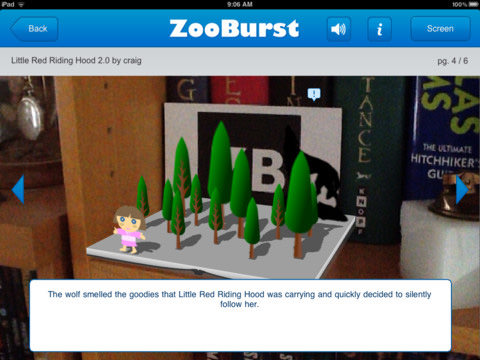5 Top Augmented Reality Apps for Education
The concept of augmented reality has been in existence for a few years now despite the fact that many users of mobile devices are under the impression that it is a new phenomenon. New technologies such as Google’s augmented reality glasses which are the first computing eyewear are still in the testing phase. This leads mobile device users to believe augmented reality is new on the horizon.
Even though Google Glasses have yet to be officially released, there are hundreds of augmented reality apps that you can get for your smartphone which work just as well. These apps can be used in everyday applications and even more so for educational purposes. Augmented reality apps are changing the way educational content is offered which helps to improve classroom learning through interaction. Let’s take a look at the 5 best augmented reality apps for education that you can try out.
1. Google Sky Map
This is an augmented reality app which makes learning about astronomy interesting and fun. Instead of looking at descriptions of constellations in a book and then attempting to identify them in the sky, you can use Google Sky Map to directly identify stars and constellations using the camera on your smartphone.

Simply hold your smartphone up in the direction of the sky to receive automatic identification of stars and constellations. Regardless of the direction you point your phone, Google Sky Map will automatically identify the elements which appear on your camera lens. No more guessing if that wonder in the sky is a planet, a star or a satellite.
Google Sky Map is a free augmented reality app and works with Android 1.6 and higher.
2. FETCH! Lunch Rush
Recently released by PBS KIDS, FETCH! Lunch Rush is an augmented reality app to teach math skills to elementary students through the use of visualization. Designed in 3-D, the app uses your smartphone camera to place graphics on your camera over real-world surroundings. The app then teaches elementary students to add and subtract using real-world scenarios which allow for visualization while solving math problems.

FETCH! Lunch Rush is designed for use with the iPhone, iPod Touch and iPad and is available for free at the App Store. It is the first augmented reality app for education released by PBS.
3. GeoGoggle
(GeoGoggle has been discontinued.)
GeoGoggle is a great helper when it comes to acquiring geography skills and judging distances to specific destinations. Students can learn geographical measurement such as latitude and longitude by applying GeoGoggle to real-world surroundings.

The app also allows you to calculate altitude and the distance between two points using a 3D compass. Like other augmented reality apps the app uses overlay graphics combined with real-world surroundings to help you learn the fundamentals of geography.
GeoGoggle is a free app and is designed for Android 2.1 and higher.
4. ZooBurst
(ZooBurst has been discontinued.)
This is a nifty augmented reality app to help elementary level students learn through visual imaging. With this app, students get to interact and become a part of a story. ZooBurst allows you to engage in digital storytelling by designing storybooks complete with 3-D characters.

The digital storybooks can be customized using a library of thousands of images and and users can add Adobe flash animations, narrations, and speech balloons to the story. Once the book is completed, students can become a part of the story via webcam. They can also click on the characters in the story to learn more about them.
The digital storybook created by ZooBurst can be rotated enabling you to view it from any angle. ZooBurst can also be used to help students create presentations and communicate complex ideas which would otherwise be difficult to explain. Check out this video presentation to get a better idea of how ZooBurst works.
5. Acrossair
(Acrossair has been discontinued.)
Acrossair is a browser which can be used in real-world surroundings and in the classroom for learning and discussion. The browser can carry apps that push the boundaries of the uses of augmented reality. You can find locations near you and share your locations with friends. Students can also create interactive classroom projects, and participate in interactive photo walls displaying wiki and multimedia on a classroom topic.

Another fun feature of acrossair is that it enables you to engage in classroom discussions via Twitter AR. After sending out your tweet, you can launch acrossair to check out the latest tweets by people near you via geotagging technology. Imagine holding up your phone and seeing tweets by the people around you.
Conclusion
These are only a few of the new augmented reality apps for education which can change the face of learning in your classroom. Augmented reality is a trend that is worth following as new apps and technologies are developed to make learning innovative, interesting and fun.